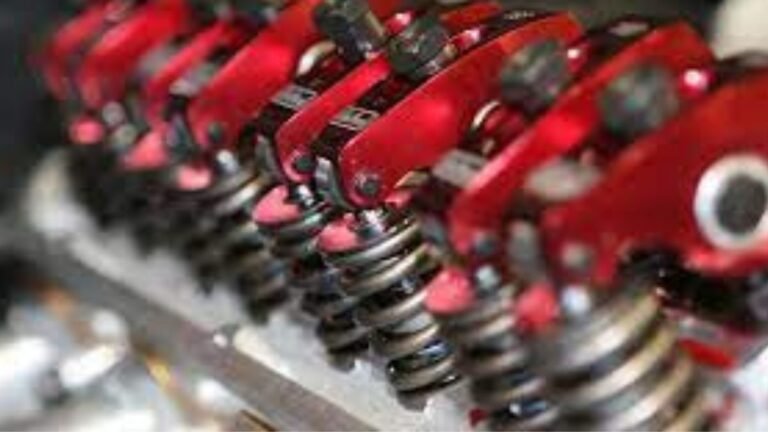Wiring the Future: The Impact of Custom Wire Harnesses on Technology
In technological advancements, custom harnesses serve as critical components that may not capture the spotlight but play an essential role in the functionality and advancement of various systems. These bespoke solutions tailor electrical systems to specific requirements, ensuring efficiency, safety, and performance across numerous industries.
The intricacies involved in wire harness design allow for superior electrical integrity and durability, meeting stringent industry standards. This meticulous approach helps maintain system robustness despite rigorous operational demands, enhancing system reliability.
The Role of Custom Harnesses in Various Industries
Custom harnesses are pivotal in integrating and simplifying complex wiring systems, fundamental in the automotive, aerospace, consumer electronics, and healthcare sectors.
- Automotive Applications: In the automotive industry, these straps are designed to withstand harsh conditions and are tailored to handle specific power and data distribution needs in vehicles, from basic models to luxury cars and electric vehicles.
- Aerospace and Aviation: For aerospace applications, these products must meet exceptionally high reliability and safety standards as they navigate the critical systems of aircraft and spacecraft under extreme conditions.
- Consumer Electronics: In consumer electronics, custom straps help efficiently manage space and power within devices, which is crucial for the compact designs and functionality of smartphones, laptops, and other personal electronics.
- Medical Equipment: In the medical field, these straps ensure that devices such as imaging systems and monitors function flawlessly, with reliability that could be life-saving.
Advancements in Harness Technology
The continuous evolution in custom cable harness manufacturing is driven by the need to adapt to emerging technologies and the increasing complexity of electronic systems.
- Material Innovations: The development of new, more durable, and flexible materials enhances the performance and lifespan of cable straps. Advances in insulation and conductor materials offer better resistance to environmental stressors such as heat, cold, and moisture.
- Precision Manufacturing: With advancements in manufacturing technology, including automation and precision engineering, the production of cable harnesses has become more efficient and less prone to errors. This precision is critical in applications where a small mistake can have significant repercussions.
- Design Software: Cutting-edge software tools allow for meticulous design and testing of cable harnesses before they go into production. This software enables rapid prototyping, virtual testing, and optimization, reducing the time and cost of bringing new products to market.
Environmental and Economic Impact
As industries lean more towards sustainability, custom cable harness manufacturing is also evolving to reduce its environmental footprint.
- Recyclable Materials: Manufacturers increasingly use recyclable materials in cable harness production, reducing waste and promoting sustainability in technology sectors. This shift minimizes environmental impact and aligns with global efforts towards greener manufacturing practices. It contributes to resource efficiency and supports circular economy initiatives.
- Energy Efficiency: By improving the energy efficiency of harnesses, manufacturers are helping to decrease the overall energy consumption of the devices in which they are used, leading to greener technology solutions. This advancement supports sustainable development goals, reduces operational costs, and enhances product appeal to environmentally conscious consumers.
- Reduction in Waste: Modern manufacturing processes are designed to minimize waste, whether through more accurate wire cutting, better recycling practices, or reduced use of hazardous materials. These initiatives not only comply with environmental regulations but also improve the efficiency of production lines, reducing overall costs and enhancing corporate responsibility.
Challenges and Solutions in Custom Harness Manufacturing
Despite its critical role, the custom cable harness industry faces several challenges that must be continuously overcome to meet the demands of rapidly advancing technologies.
- Complexity of Designs: As electronic systems become more complex, the straps required become more intricate, posing challenges in design, testing, and manufacturing. These challenges necessitate advanced engineering techniques and sophisticated equipment to ensure precise configurations and reliable functionality in finished products.
- Supply Chain Issues: Global supply chains can be volatile, affecting the availability of materials and components. It requires manufacturers to be flexible and innovative in sourcing materials and managing inventory. Adapting to these fluctuations ensures continuous production and mitigates delays, maintaining market competitiveness and customer satisfaction.
- Regulatory Compliance: Meeting international standards and regulations can be challenging as these vary significantly across different regions and industries. Manufacturers must stay informed and compliant with all relevant guidelines to ensure safety and efficacy. Staying compliant helps avoid legal issues and enhances product reliability, securing consumer trust and business longevity.
Though often unseen, custom harnesses are integral to the technological advancements that shape your world. The demand for highly specialized and efficient wire harness solutions will increase as technology evolves rapidly. The industry’s commitment to innovation, quality, and sustainability ensures that it remains at the forefront of technology development, ready to meet the challenges of tomorrow. By continuously improving and adapting, custom cable harness manufacturers play a pivotal role in wiring the future of technology, making possible the next generation of innovations.







